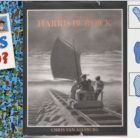Writing Trauma: Notes of Transcendence, #4—The Situation and the Story
 This post is part of a series by Tracy Strauss on “Writing Trauma: Notes of Transcendence,” about the process and power of writing and publishing about trauma-related topics. To read the archives, click here.
This post is part of a series by Tracy Strauss on “Writing Trauma: Notes of Transcendence,” about the process and power of writing and publishing about trauma-related topics. To read the archives, click here.
As a teenager, an avid reader, I spent my summers working as a “page” at the public library, assisting the librarians; I re-shelved returned books, helped patrons find books, and coordinated the children’s book club. The summer before twelfth grade, however, I decided I wanted a “less nerdy, more exciting” job—so I became a cashier at CVS.
During my second week behind the register, I was held up at gunpoint.
Coincidentally, my father had, just that morning, instructed me on how to behave during a robbery: Stay calm. Pretend nothing bad is happening. Do whatever the robber says. Give him everything.
I stayed so calm that a customer who approached my register didn’t notice what was happening as she lined her bottles of shampoo on the counter, and waited.
In college, in an introductory creative writing workshop, my professor assigned us to read Jamaica Kincaid’s “Girl,” and to write an imitation in response. I titled mine “Cashier” and wrote about how to conduct oneself during a robbery. Writing in second person point of view, I found power in a situation in which I’d felt powerless. I was no longer the one being ordered to do things I didn’t want to do; I was doing the commanding. Using second person, I simultaneously distanced myself from my vulnerable position while mirroring my state of dissociation. In writing, the situation wasn’t happening to me—it was happening to somebody else: “you,” the reader, or to an encased part of myself in my past, the one who’d been the cashier, a separate person from my current writing self.
I was no longer the victim but the witness as I wrote:
Remember the way the customer stands waiting, how he shifts his weight from right to left, from leg to leg. “I’ll have a carton of Marlboro and —.” Menthol or filter? Soft pack or box? “Doesn’t matter.” See the customer’s red cap and bark-colored hair, how the strands nearly hide the mole at the top of his forehead. Remember how you see your face flicker in the dark-shaded sunglasses…
My professor recommended that I submit my piece to literary magazines for possible publication. I did—and it was rejected, again and again. One editor relayed that “something seems to be missing.” I pondered the comment for years but I couldn’t get a handle on what I’d omitted: I’d written all that had happened. What else was there?
*
In my mid-thirties, I was traveling by bus back to Boston after attending the Association for Writers and Writing Programs (AWP) conference in New York City. An older woman sat beside me. When our bus became stuck in a two-hour traffic lockdown on I-84 in Connecticut while state troopers chased a suspected criminal, she demanded information from a passerby the police had asked our driver to take on board: “What’s the situation?” she asked emphatically.
She was Vivian Gornick.
In The Situation and the Story, which I first read in a graduate memoir workshop, Gornick writes, “Every work of literature has both a situation and a story. The situation is the context or circumstance, sometimes the plot; the story is the emotional experience that preoccupies the writer: the insight, the wisdom, the thing one has come to say.”
I came to understand that what was missing from “Cashier” was my insight into the trauma—not the trauma at CVS, but the violation and loss I was experiencing at home, within my family. I’d written the situation of the hold-up:
Remember to stay calm in order to keep the customer calm. See the aisles of merchandise lined behind him, rows of packaged black combs, foil-wrapped chocolates, and One-A-Day multivitamins. Your gaze, your mind, blurs then finds the no-sale key on the register. Feel how your fingertip touches, the skin and bone presses, into it. Hear Lenny Kravitz sing insistently from somewhere above:
“So many years I’ve tried to keep this love alive
But baby it ain’t over til it’s over…”
Perhaps by telling “you” to hear the Lenny Kravitz song, I was hinting at the underlying story, but the deeper layer of truth, of meaning, was hard for me to grasp. As a teenager, I was often told by my father that what I perceived to be happening wasn’t actually happening. Simultaneously, my mother told me that it was imperative to forget the truth in order to survive it.
The Situation and the Story explains the role of the narrator as something of a life preserver:
…I am out there on that raft before I have found the narrator who can bring under control the rushing onslaught of my own internal flux. When I am doing better, I am able to see that flux is a situation. I stop churning around inside my own defensiveness; adopt a tone, a syntax, a perspective not wholly mine that allows me to focus on…what? …I become interested then in my own existence only as a means of penetrating the situation at hand. I have created a persona who can find the story riding the tide that I, in my unmediated state, am otherwise going to drown in.
Ultimately, with “Cashier,” I found my narrator by becoming my own reader and observing my repetitive use of the word “remember.” Then, I wove the larger story into the portrait of my remembrance:
The customer says, “give me the large bills, the ones you hide,” he points, “underneath your drawer.” Okay, you say. Your hand removes the wrinkled bills.
He grabs.
Your father says, “you know I love you, right?” See how the palm is placed on your knee, how the fingers curl around the crook of your thigh. Yes, you say, always.
Remember to give him everything. Feel the emptiness spread inside you, pulling at your ribs, leaking onto your cheeks…
*
A few weeks after the hold-up at CVS, I identified the robber in a lineup, and he went to jail. As for my job, I was let go, because, according to my manager, I’d “given away” $250. As for “Cashier,” twenty years later my story was fully realized on the page, and published.



